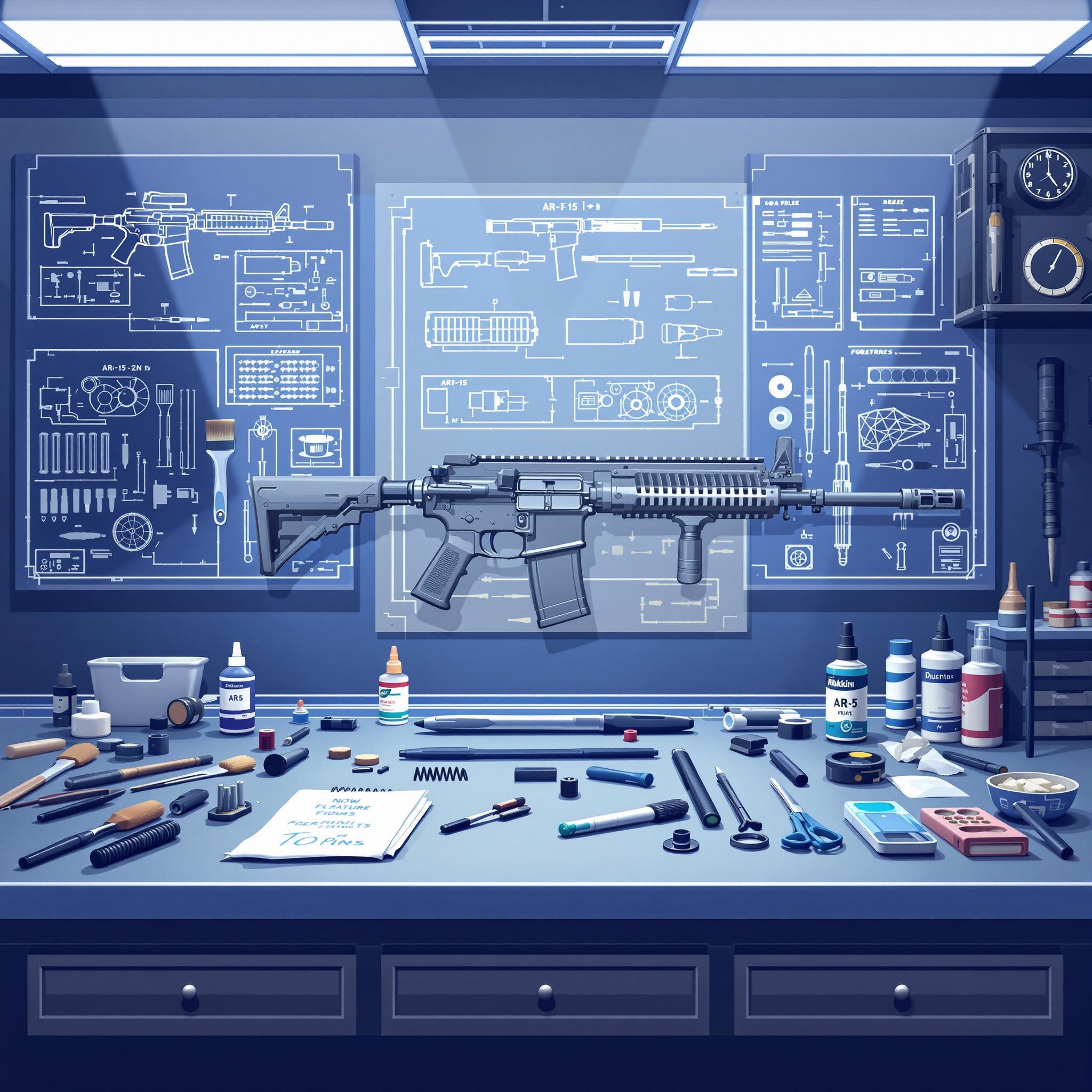Proper AR-15 maintenance is essential to ensure longevity and top-notch performance. Whether you’re a casual shooter, a competitive marksman, or a dedicated enthusiast, maintaining your AR-15 not only safeguards your investment but also enhances reliability during critical moments. In this comprehensive guide, we’ll walk you through practical maintenance routines, expert tips, and common pitfalls to avoid.
Why AR-15 Maintenance Matters
Your AR-15 is a precision instrument. Like any mechanical device, it requires regular care to function optimally. Without routine maintenance, dirt, carbon buildup, and moisture can compromise its performance. Furthermore, neglecting maintenance may lead to malfunctions, decreased accuracy, and ultimately, a shortened lifespan for your AR-15.
Moreover, consistent maintenance helps you detect potential issues before they escalate into costly repairs. Thus, making it a habit can save you time, money, and frustration in the long run.
Essential Tools for AR-15 Maintenance
Before diving into the cleaning process, gather these essential tools:
-
Cleaning rod and bore brush
-
Chamber brush and patches
-
Nylon and brass brushes
-
Cleaning solvents and lubricants
-
Lint-free microfiber cloths
-
AR-15-specific cleaning mat and bench block
-
Torque wrench and punch set
-
Cotton swabs and pipe cleaners
Having the right tools at your disposal simplifies the process significantly. Additionally, it ensures you don’t inadvertently damage your AR-15 during maintenance.
Step-by-Step Guide: Maintaining Your AR-15
1. Safety First
First and foremost, always ensure your AR-15 is unloaded. Remove the magazine, lock the bolt to the rear, and visually inspect the chamber. Safety cannot be overstated.
2. Disassembly of Your AR-15
Next, begin disassembling your AR-15 into its primary components:
-
Upper receiver
-
Lower receiver
-
Bolt carrier group (BCG)
-
Charging handle
-
Buffer assembly
Field stripping your AR-15 to this level is typically sufficient for routine maintenance.
3. Cleaning the Barrel and Chamber
Using a bore brush soaked in solvent, scrub the barrel from chamber to muzzle. This removes carbon fouling and copper deposits. Follow up with clean patches until they come out spotless. Similarly, use a chamber brush to thoroughly clean the chamber area.
Notably, a clean barrel directly impacts your AR-15’s accuracy and consistency.
4. Cleaning the Bolt Carrier Group (BCG)
The BCG is the heart of your AR-15 and demands special attention. Scrub the bolt, carrier, gas key, and firing pin with a nylon brush and solvent. Ensure all carbon buildup is removed, especially around the bolt lugs and extractor.
Afterward, wipe down each component with a dry cloth to prevent solvent residue from lingering.
5. Cleaning the Lower Receiver
For the lower receiver, focus on the trigger assembly, magazine well, and buffer tube. A soft brush and compressed air work wonders in dislodging debris from tight spaces. Be cautious with solvents around polymer parts.
6. Lubricating Your AR-15
Proper lubrication is critical. Apply high-quality lubricant sparingly to friction points, including:
-
Bolt carrier rails
-
Cam pin
-
Charging handle tracks
-
Buffer spring
Avoid over-lubrication as it attracts dirt. A well-lubricated AR-15 cycles smoothly and resists premature wear.
7. Reassembly and Function Check
Reassemble your AR-15 carefully, ensuring all components are seated correctly. Perform a function check to verify safety and operability. This includes:
-
Charging the bolt
-
Engaging the safety selector
-
Testing trigger reset
If everything operates smoothly, your maintenance routine has been successful.
Advanced AR-15 Maintenance Tips
Inspect Wear and Tear
Besides cleaning, routinely inspect your AR-15 for wear indicators. Pay close attention to:
-
Bolt lugs and gas rings
-
Extractor springs and pins
-
Buffer spring tension
-
Receiver extension threads
Early detection of wear can prevent catastrophic failures.
Torque Fasteners Correctly
Loose fasteners can lead to accuracy issues and component damage. Use a torque wrench to secure optics mounts, barrel nuts, and other critical fasteners to manufacturer-specified values.
Monitor Gas System Health
The gas block, tube, and key are vital for reliable cycling. Check for carbon leaks and ensure tight fittings. An improperly aligned gas system can severely impact your AR-15’s performance.
Common AR-15 Maintenance Mistakes to Avoid
Despite best intentions, some mistakes can compromise your efforts. Here are pitfalls to avoid:
-
Over-cleaning the bore, leading to unnecessary wear
-
Excessive lubrication, attracting dirt and debris
-
Using aggressive solvents on delicate finishes
-
Ignoring small parts like springs and detents
-
Failing to replace worn gas rings or extractor springs
By staying mindful of these errors, you protect both the performance and longevity of your AR-15.
Maintenance Schedule: Keeping Your AR-15 in Top Shape
Establishing a maintenance schedule ensures consistent upkeep. Here’s a recommended timeline:
-
After Every Range Session: Quick wipe-down, bore snake pass, and light lubrication
-
Every 500 Rounds: Full field strip, deep clean, and inspection
-
Annually or Every 3000 Rounds: Detailed inspection, gas system check, and part replacement as needed
Naturally, heavy usage or adverse environmental conditions may require more frequent maintenance.
Storing Your AR-15 Properly
Proper storage is an often-overlooked aspect of AR-15 maintenance. Store your firearm in a cool, dry environment. Utilize a gun safe with humidity control to prevent rust. Additionally, consider using protective gun socks or treated storage bags for added protection.
Regularly inspect stored firearms for moisture buildup and reapply protective lubrication as needed.
Conclusion: Protect Your AR-15 Investment
Maintaining your AR-15 is not just about cleanliness—it’s about preserving performance, safety, and investment value. Through routine maintenance, vigilant inspections, and proper storage, your AR-15 will continue to serve you reliably for years to come.
In conclusion, whether you’re an experienced shooter or a new owner, these practices ensure your AR-15 remains a dependable tool. Furthermore, consistent care builds familiarity, enhancing your overall shooting proficiency.


